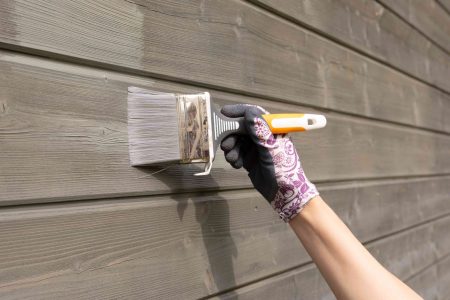Slab jacking looks deceptively simple, and to many homeowners, it appears to be the “magic bullet” they need to repair their foundations.
Slab jacking, in brief, means to lift one side of a concrete slab from below to re-level that slab. While this idea sounds attractive—no breaking up and disposal of concrete required—it is not quite as simple as it first appears.
Warning
Always consult with a structural engineer, who can determine the integrity of the concrete and the structure on top. If the concrete or the structure is unstable, slab jacking may not be an option.
Dry-Dock Boat Analogy
Imagine something heavy—a boat in dry-dock. Resting, it weighs several thousand pounds. Your objective is to raise it three feet. Since you do not happen to have a crane handy, the simple approach is to put water under it. It floats, raises, and you are done. You have lifted a heavy object hydraulically.
Raising a concrete slab is not exactly the same, but close enough for comparison. You may have a concrete slab patio, driveway, or portion of a house foundation that has sunken or tilted over the years.
In the example of the house foundation, if the house was built over a crawlspace or basement, it is possible to get into the crawlspace or basement to insert jacks and raise the foundation. But it is impossible to get under concrete slabs. So, a cement “cocktail” is squirted through holes in the concrete, which raises the foundation. Caution: Slab jacking is not intended to raise or re-level entire houses. It is more intended for portions of slab foundations, garage floors, sidewalks, patios, driveways, etc.
Why Slabs Sink or Tilt
Before understanding slab jacking, you need to understand why concrete slabs fail. Traditionally, houses were built over a crawlspace or basement—the flooring was raised over the ground-level. But as concrete became a predominant building material, concrete slabs became the vogue. In simple terms, sheets of concrete were poured at grade, and this became the level for the house’s flooring.
Soil is not a stable thing. Other materials—rock, gravel, ash, sand, etc.—are far more stable. Also, soil can have empty spaces within it. If you have ever worked in a garden, you know this. As the years go by, those empty spaces allow the soil base to shift and compact. But often in ways that you don’t want.
How the Process Works
Here’s how concrete slab jacking works.
- A series of holes, about a half-inch in diameter, are drilled in the concrete slab. If you have ever injected insulation into your walls, or at least know the process, you will know that many holes are required. It’s the same thing with slab jacking. One hole will not suffice.
- A “cocktail” of stable materials, such as sand, gravel, and ash, along with water, is injected into the holes.
- The slab slowly raises.
- The holes are plugged.
Uretek and Polyurethane Concrete Lifting Materials
Newer methods of slab jacking dispense with the natural elements (the sand and gravel slurry), relying instead on polymers. Uretek is the most visible manufacturer of these polymer resins.
While Uretek is more expensive than traditional slab jacking materials, its chief distinction is that pumping pressure does not lift the slab—expansion of the polyurethane creates the “lift.”
Read the full article here














